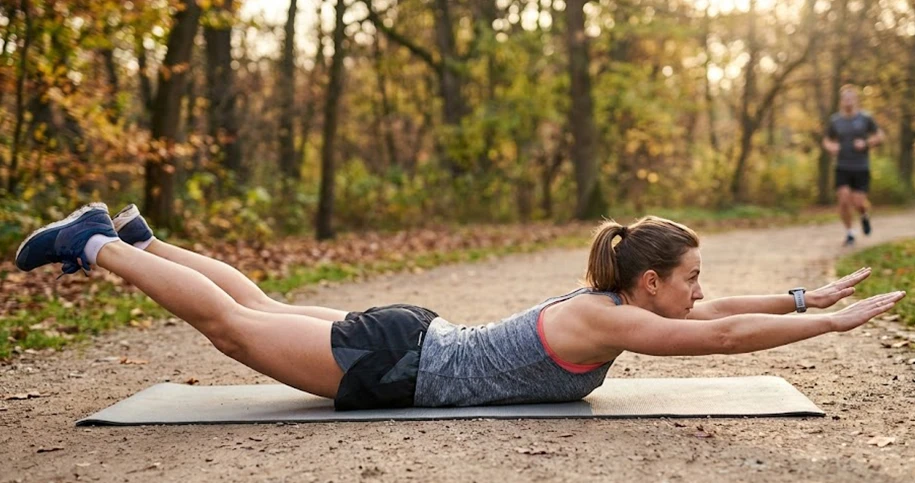Whether you're in your 50s, 60s, or beyond, running offers a treasure trove of mental and physical health benefits, regardless of your age!
So are you thinking about lacing up those running shoes and hitting the pavement at the age of 50 or beyond? That's absolutely fantastic news!
Whether you're in your 50s, 60s, or beyond, running is a sport that's open to everyone, and it offers a treasure trove of mental and physical health benefits, regardless of your age!
Even if you haven't run in years, don't worry.
It's entirely possible to get started at any point in your life!
All it takes is a little patience, some self-awareness, and, of course, a good pair of running shoes.
In this section, we're going to explore the exciting world of running for those over 50.
Can you start running at the age of 50 or beyond?
Absolutely yes!
Running is not like some high-impact sports; you can ease into it and gradually prepare your body for the new challenges ahead. Interestingly, starting running later in life might even give you a bit of an advantage.
Some studies suggest that those who've been running most of their lives may have less elastic muscles and connective tissues. This elasticity is crucial for running efficiency, allowing you to harness energy from impact forces and use it to propel yourself forward.
In fact, some world records in the masters' category are held by individuals who began their running journeys later in life. So, there's no time like the present to start your running adventure!
Benefits to start running at 50
Running offers a myriad of health benefits, no matter your age.
For older runners, these benefits include:
- improved mental acuity;
- better memory;
- reduced stress and anxiety;
- enhanced sleep quality;
- lower disability rates;
- improved balance;
- stronger bones;
- fewer diseases;
- healthier cardiovascular system;
- positive changes in health metrics like weight, blood pressure, heart rate, cholesterol, BMI, and more.
How does running differ for older runners compared to their younger counterparts?
There are a few key distinctions between older and younger runners.
These include changes in tissue elasticity, muscle mass, mobility, the significance of speed, and the need for more recovery time.
As an older runner, it's important to tailor your training to account for these differences and work on strategies to counteract them.
Now, let's get you started on your running journey at 50 and beyond!
Starting a new fitness endeavor like running requires careful planning and consideration, especially as we age.
Best tips to start running at 50
Consult with your doctor: Before embarking on your running journey, it's a good idea to have a chat with your doctor and get a comprehensive physical examination. This will help ensure that you're not at risk for any health issues that could be exacerbated by running.
Invest in the right shoes: Running shoes can make or break your experience, so make sure you find the perfect pair. Visit a specialty running store for expert assistance in selecting shoes that offer the right support and cushioning for your needs.
Warm-up and cool down: Don't skip your warm-up and recovery routines. Properly prepare your muscles with stretches and light exercises before your run, and be sure to cool down with some gentle walking, stretching, and foam rolling afterward.
Start with walking: Begin your running journey by incorporating walking into your routine. Gradually introduce running intervals as your fitness improves. This approach is gentler on your body and helps reduce the risk of injury.
Run every other day: Give your body ample time to recover by running on non-consecutive days. This is especially important for older runners who may need more recovery time.
Fuel your body: Don't forget to eat! Ensure you have a light meal before running to keep your energy levels up, and consider refueling with carbs and protein after longer runs to aid in muscle repair, here you can find best fruits for runners.
Quality over quantity: Focus on efficient training, emphasizing speed workouts over filler sessions. High-intensity training, including hill repeats and intervals, is essential for older runners.
Strength training: Incorporate strength training into your routine to combat muscle mass decline. Even simple bodyweight exercises can make a significant difference in your strength and overall fitness.
Prioritize mobility: As we age, joint mobility becomes crucial. Incorporate mobility exercises into your warm-up and cross-training sessions to prevent injuries and maintain flexibility.
Adjust your training schedule: Older runners may require more recovery time between hard workouts. Consider spacing your workouts farther apart for optimal recovery and performance.
Stretch it out: Pay extra attention to stretching, both before and after your runs. Dynamic stretching before and static stretching after can help maintain flexibility and reduce the risk of injuries.
Cross-train: Diversify your fitness routine with low-impact activities like cycling, swimming, and strength training. These activities support your cardiovascular health and overall well-being while giving your body a break from the impact of running.
Conclusion
Running beyond the age of 50 may require a bit more intention and care, but the incredible mental and physical health benefits make it all worthwhile. So, get out there and start enjoying the wonderful world of running over 50!




.webp)
.webp)
.webp)